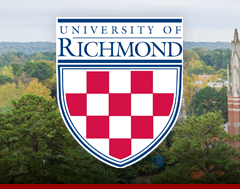Off-campus University of Richmond users: To download campus access theses, please use the following link to log in to our proxy server with your university username and password.
Date of Award
5-2025
Document Type
Restricted Thesis: Campus only access
Degree Name
Bachelor of Science
Department
Biology
First Advisor
Dr. Kelly Lambert
Second Advisor
Dr. Arella Gussow
Abstract
With over 300 million individuals affected by depression globally, its pervasive effects on society demand better understanding of the symptomatic mechanisms. Motivation to persist through challenges is commonly deficient in depressed individuals. Our lab is interested in how enhanced anticipation of positive events can shape different types of motivation. Thus, the aim of this study is to investigate preventive resiliency granted by increasing motivation through exposure to positive experiences. To do so, we use a rodent model of enhanced anticipation in which rats are exposed to anticipation-enhanced (UPER) and anticipation-minimized positive stimuli (Enriched, ENRs). Following UPER, ENR or handled control (CTRL) training, the rats underwent a series of behavioral trials to examine possible training group differences in intrinsic versus extrinsic motivation. Intrinsic motivation was examined by measuring compensatory voluntary wheel running upon re-exposure to a running wheel after a period of abstinence. External motivation, subcategorized as positively and negatively driven, was assessed by measuring behavioral responses during a Digging Reward Task and a Swim-To- Escape Task. Neuroanatomical differences, mainly of the dopaminergic system in motivation- related pathways, were examined following the completion of the behavioral trials. Differences in expression of c-fos-positive and of tyrosine hydroxylase-positive cells in the paraventricular nucleus of the hypothalamus were investigated. Results suggested significant sex differences in intrinsic motivation, with females demonstrating greater voluntary running behavior and higher positive ultrasonic vocalization (USV) rates than males. UPER training did not significantly influence behavioral measures of intrinsic or extrinsic motivation. However, trends suggested that UPER rats exhibited greater positive affect and higher mean c-fos and TH expression in motivation- and stress-related brain regions. Although group differences did not reach statistical significance, these trends support the hypothesis that enhancing positive anticipation may modulate emotional engagement and dopaminergic activity, potentially promoting greater resilience against stress-induced motivational deficits. These findings are suggestive of the importance of anticipatory processes in motivational systems. Targeting positive anticipation could represent a useful approach for enhancing emotional resilience in clinical populations.
Recommended Citation
Shatalov, Yulia, "Exploring the Effects of Enhanced Positive Anticipation on Motivated Behavior: A Behavioral and Neurobiological Investigation in Rattus norvegicus" (2025). Honors Theses. 1862.
https://scholarship.richmond.edu/honors-theses/1862
